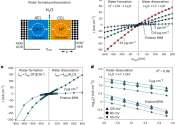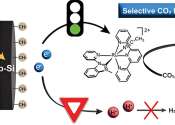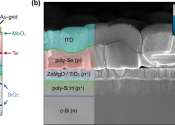New insight about the working principles of bipolar membranes could guide future fuel cell design
Bipolar membranes are a class of ion-conductive polymers comprised of two oppositely charged layers, known as the cation-exchange and anion-exchange layer. These membranes are central to the functioning of various technologies, ...









